Tatarstan is pretty much a country within a country, with its own government, own mix of ethnicities, own food, and even own flag that is used quite generously around Kazan’s many streets. It is like a new destination Russians can visit without using an external passport, which has its advantages for its tourism industry. It is an extremely beautiful and well-organized town, one that can easily rival most other cities I have been to so far. Just below, you can find some seemingly random photos from this gorgeous town with some short commentaries by me so that you too can figure out just how quirky Kazan can get, and why you should visit it!
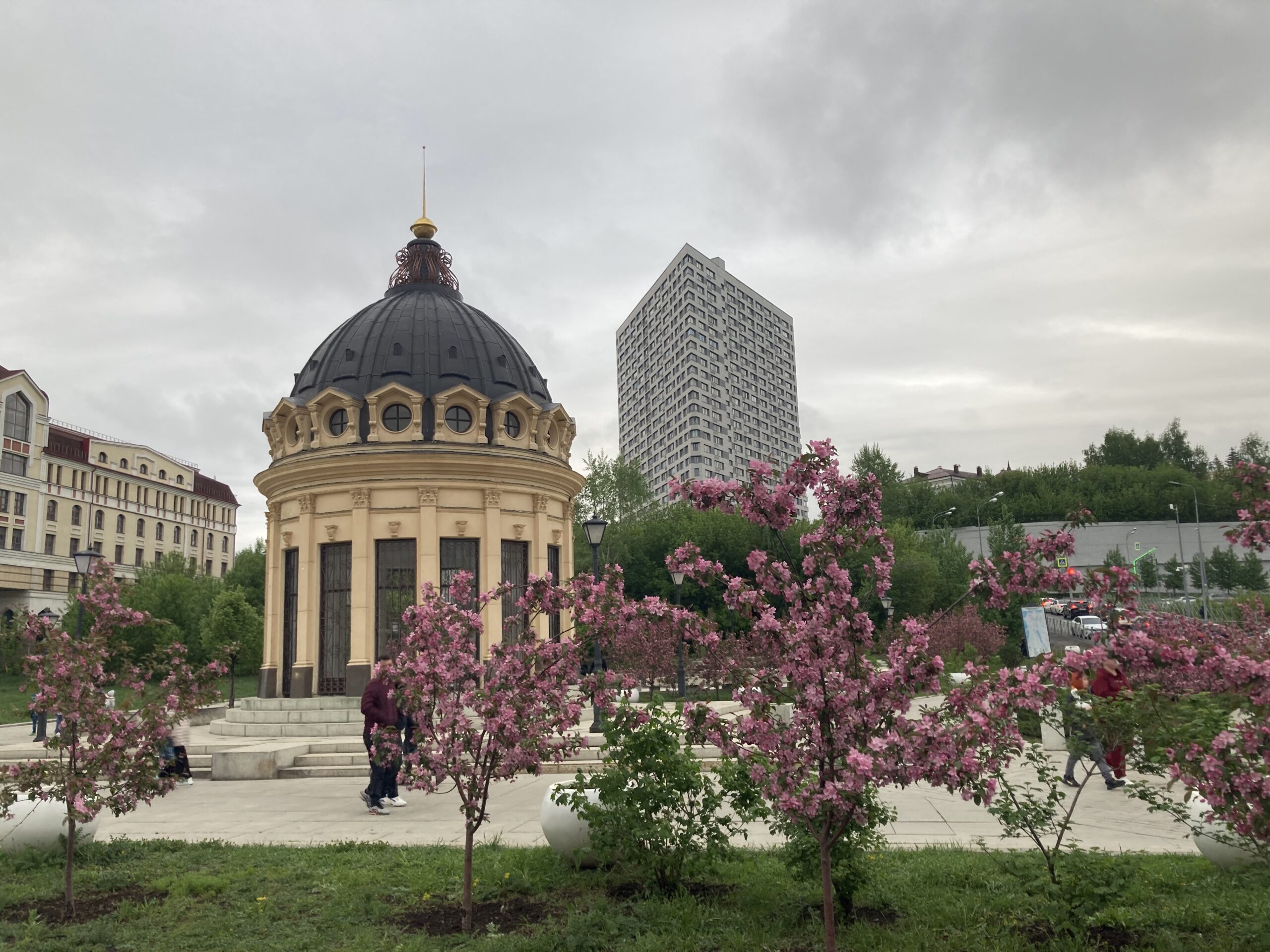
We visited Kazan during Russia’s May holidays, when it was a bit more crowded than usual. Despite this, as long as you avoided the ever so busy Bauman Street and Kazan’s amazing Kremlin, you could easily have a relaxing if not outright peaceful day. Spring was creeping in from all sides, flowers were blooming left and right, and the new and the old clashed ever so gracefully in the architectural scape of the city.
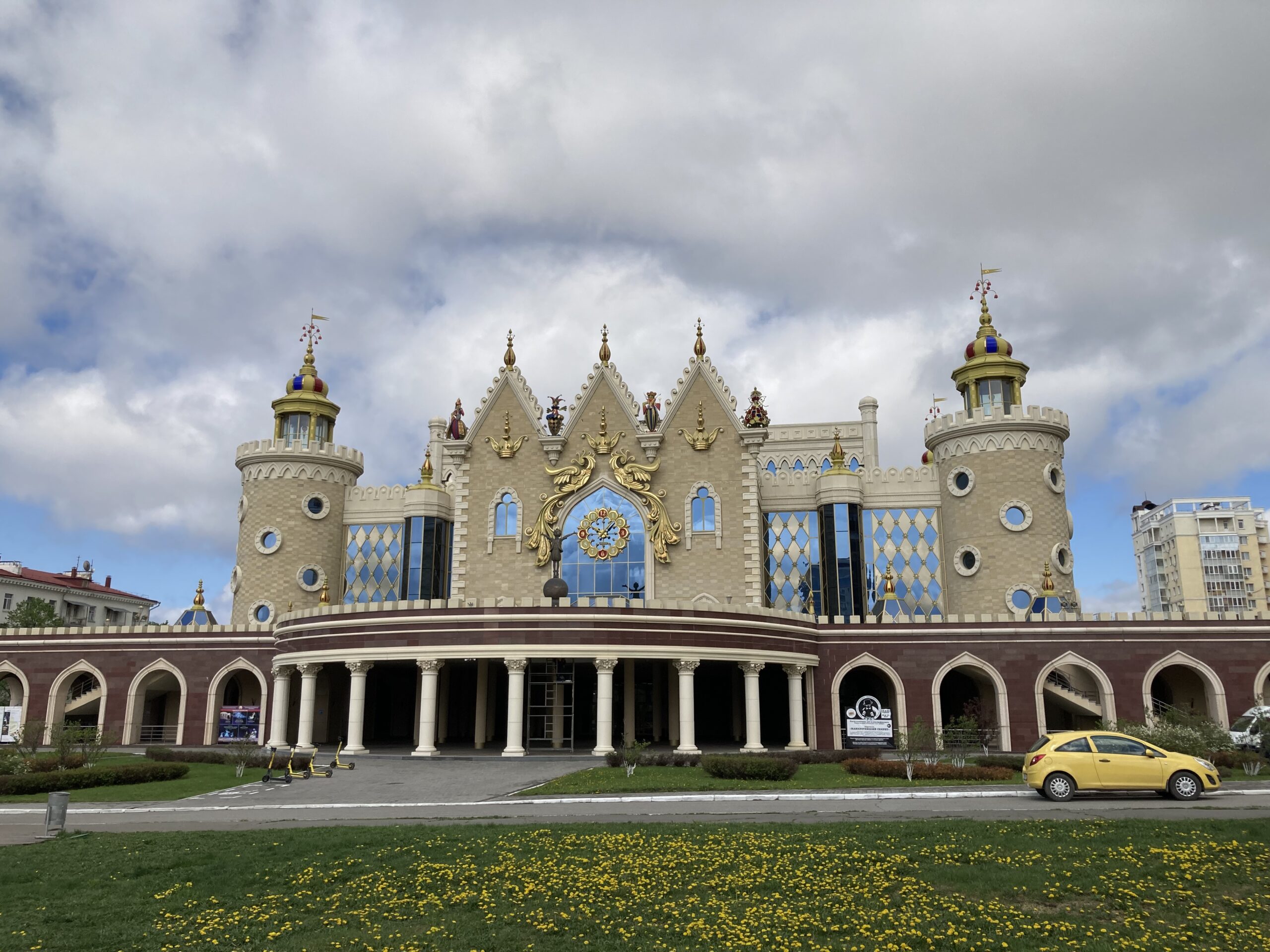
One of the weirdest buildings you will come across in Kazan is called Ekiyat, also known as the puppet theatre. It is where you can go to catch a show where people use puppets to tell complex (or not so complex) stories. I simply did not have the time to enjoy such a spectacle myself, but appreciating the style of the building from outside was more than good enough for me for the time being.
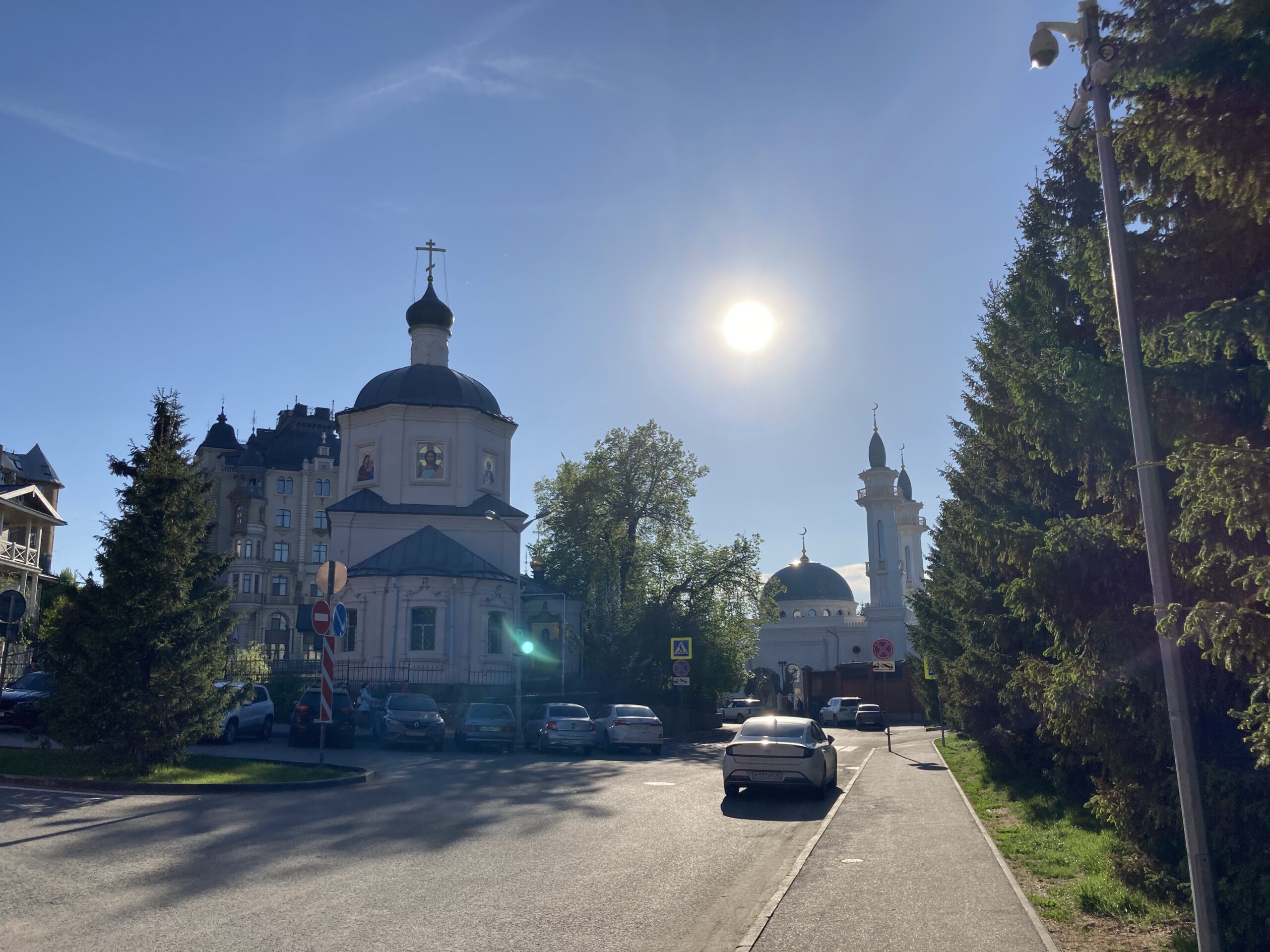
Though the so-called “Muslimness” of Kazan is often put on a pedestal when one mentions how different it is to other Russian cities, I must object to that simplification. What is truly beautiful and wholesome here is not the fact that Muslims can “dominate” the everyday life, it is that you can find plenty of interfaith communities all around Kazan’s many beautiful streets. You can easily see a church and a mosque side by side, one blasting Muslim prayers day and night and the other letting you know that it is a whole new hour with its bells whenever it is necessary to do so. People seemed at ease with one another, though it is clear that some Muslim Tatars are quite proud of keeping themselves “intact” in all these centuries, which is something interesting to say the least.
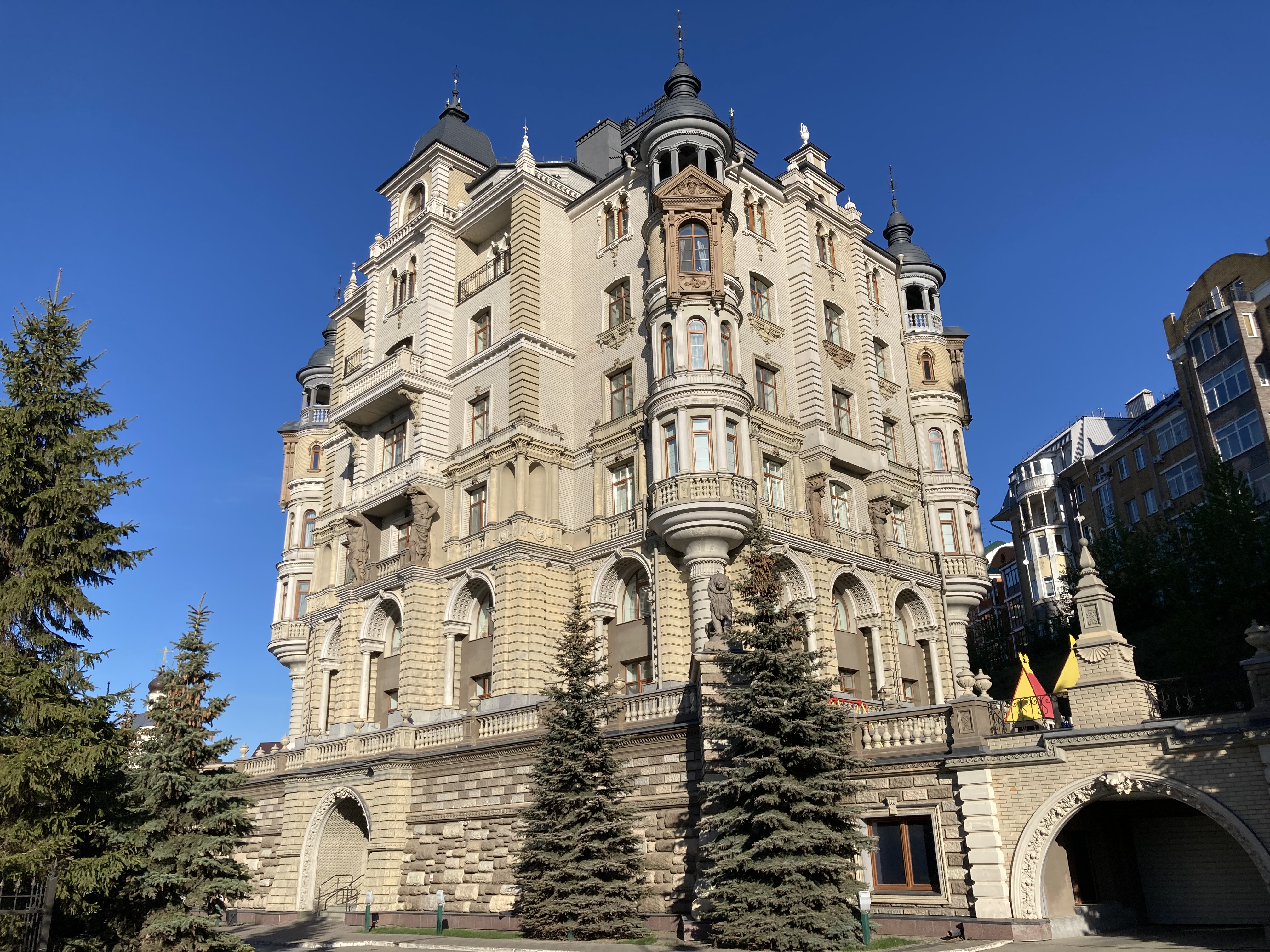
It is clear that Kazan was and still is a rich city. It used to be an important trade centre, and later on, after the WWII, it became one of the centres of oil and gas extraction. Its city centre is home to plenty of extremely ornate buildings. I cannot even imagine the number of roubles one needs to pay to buy one of these apartments, but with a view of Volga and the rest of Kazan, I think that it may be worth it.
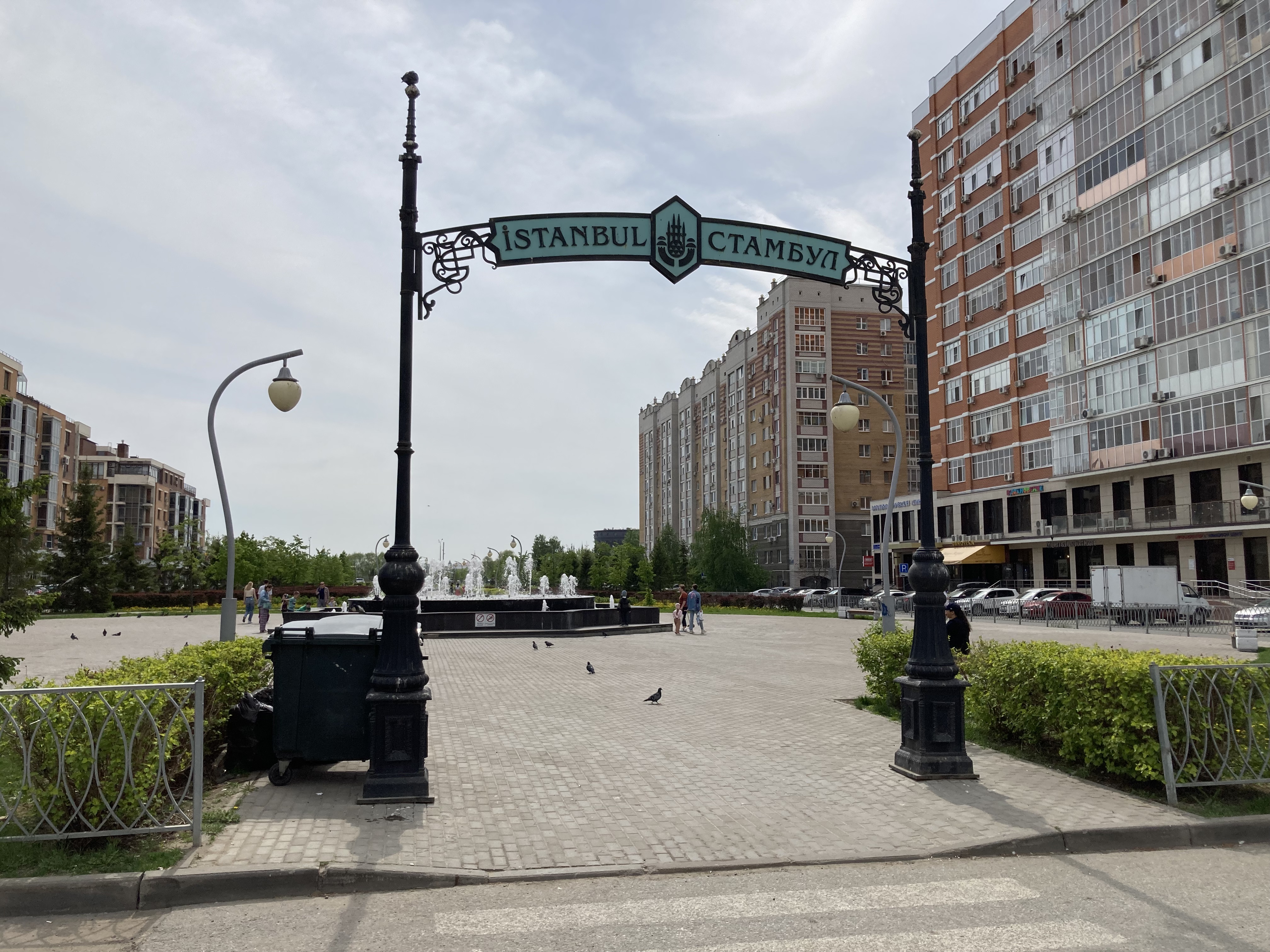
There are direct flights to Kazan from a few Turkish cities, and Tatars’ Turkic identity makes it a more desirable destination for some Turkish businessmen to set up shop here, and vice versa. That is why the city is flooded with Turkish goods, Turkish folks, and even some streets named after Turkish cities and people. It also helps that when the Republic of Turkey was founded in 1923, quite a lot of Tatar intellectuals like Sadri Maksudi came to the aid of this fledgling new state, which formed a different type of bond between Tatarstan and Turkey that last to this day.
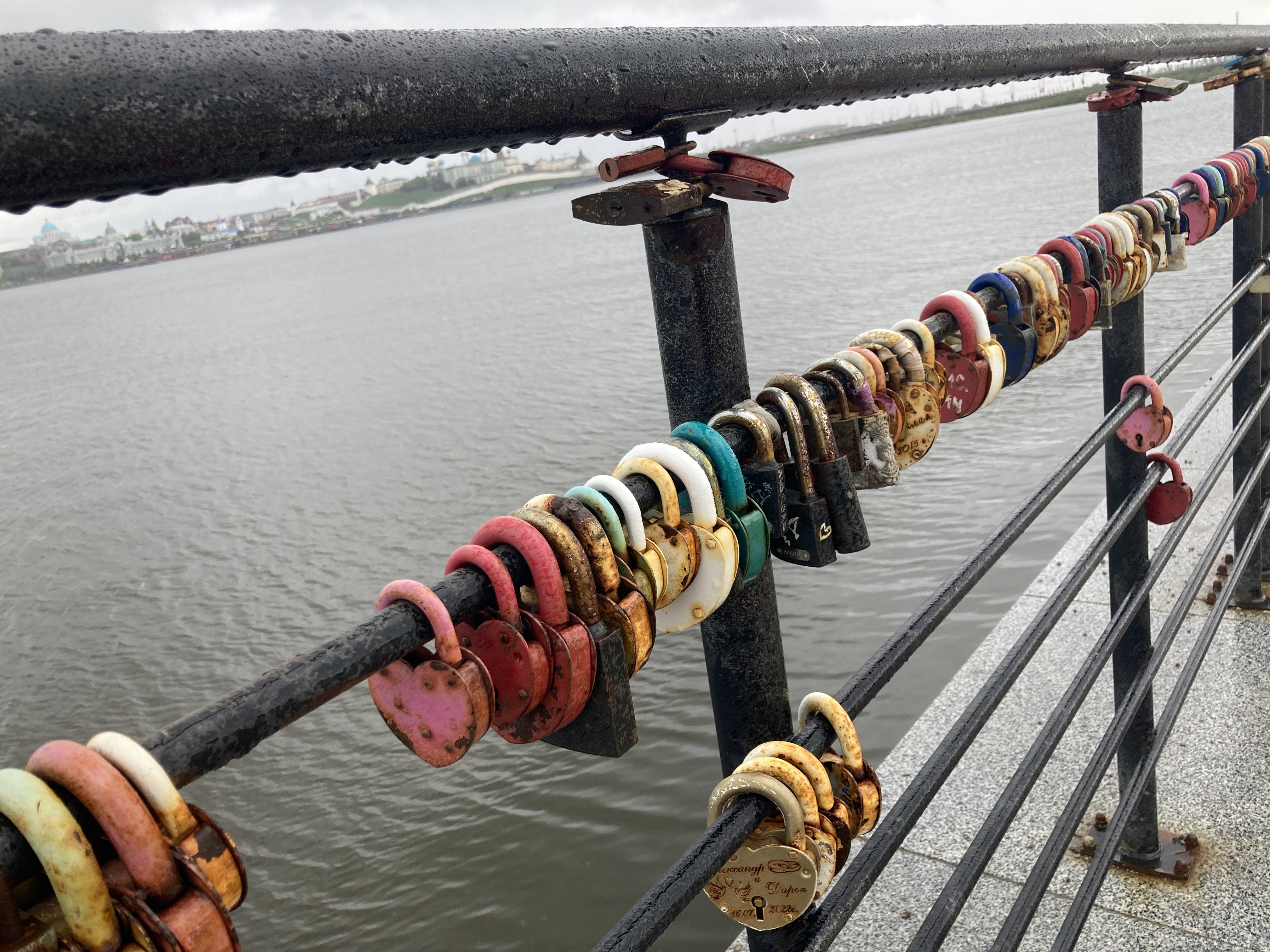
One of the landmarks of Kazan is simply referred to as “Kazan Family Center.” As you may deduce from its name, it is where people go to form their own families, as in, get married. The building itself, shaped like a cauldron, seemed a bit too “extra” for me. I did not really like it, nor the weird and rather irrelevant statues that surrounded it. For me, watching the newlyweds come out of the “cauldron” to take photos and then do a small ritual where they carve their initials on a lock and then put it on the railings by Volga was what this place was all about. It was such a sweet yet simple thing. I spent a considerable amount of time going through these locks, and some apparently stayed here for more than half a century… It does make one think, to say the least.
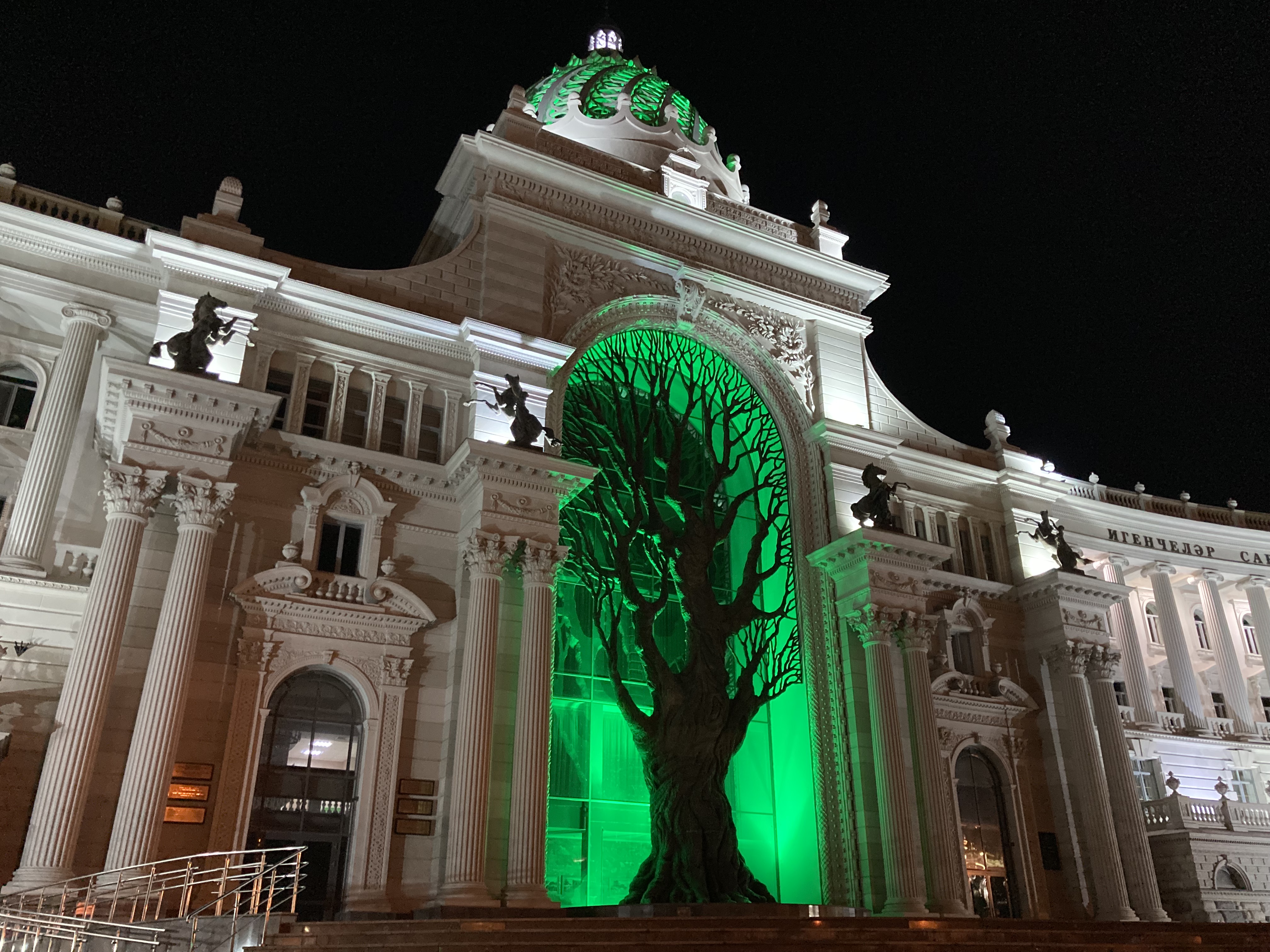
The Palace of Farmers is yet another quirky spot to visit in Kazan, one that must be visited both by day and at night. It truly looks completely different in both cases, but my favourite just has to be night-time when it feels like you are about to be teleported to a whole new dimension. Apparently, it is a governmental office for folks that deal with agriculture related issues in Tatarstan, so the insides are nowhere near as fine looking as the outside.
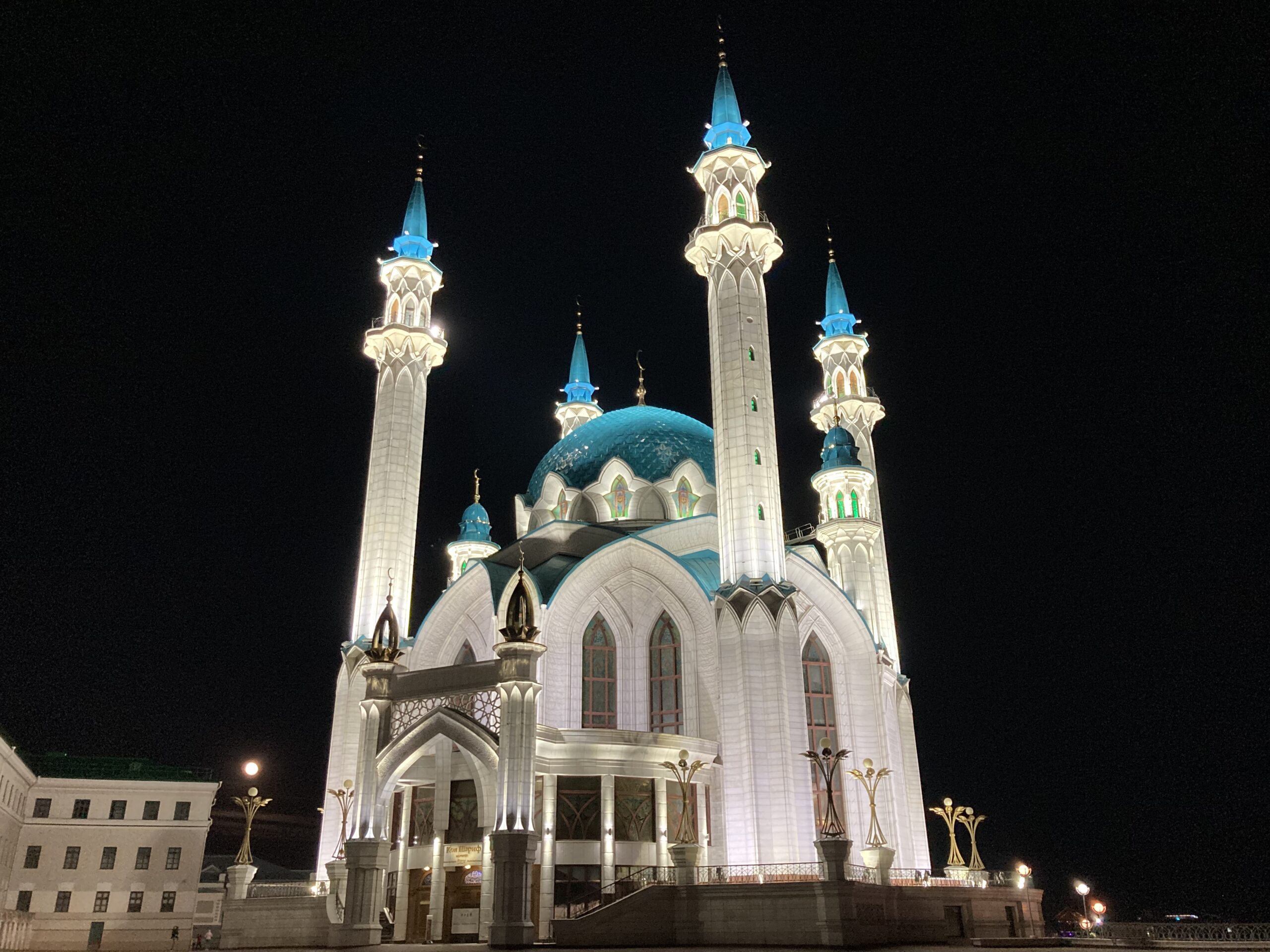
Last but certainly not least, a visit to Kazan cannot be complete without seeing its extremely young but still extremely beautiful Kul Sharif Mosque inside its UNESCO listed Kremlin. The mosque itself, inside and out, is a piece of art. It is rather small, but size was not what they were aiming for from the get-go. Once again, it is a must see both during daytime and later on when the sun sets. I also prefer visiting this one during night-time, there is just something so magical about it then. It also helps that there are very few tourists to deal with at that late a time as well.
